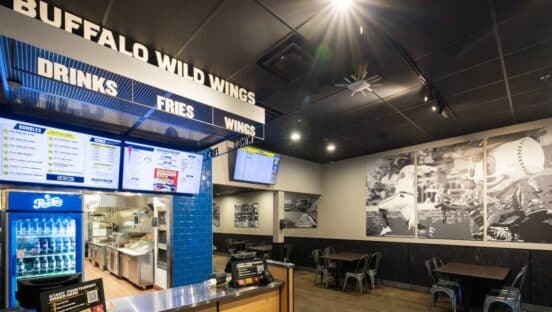The recent debacle over Toyota’s recalls tells a cautionary tale about growth for all companies, including quick serves.
The leaders at the carmaker were accused of relentlessly pursuing market share increases at the expense of product quality. In testimony to a U.S. congressional panel, Toyota CEO Akio Toyoda himself admitted, “Toyota’s priority has traditionally been the following: first, safety; second, quality; and third, volume. … These became confused.”
The folks at Krispy Kreme might have made a similar statement back in 2004 when the chain’s downward spiral began. After going public in 2000, the chain rode a wave of growth, fueling earnings through rapid expansion into new geographic areas. It also pursued new distribution points like gas stations and grocery stores, but these ended up detracting from the hot-doughnut experience that made its brand famous.
In an attempt to continue fulfilling shareholders’ expectations for growth, Krispy Kreme opened more new stores and shipped more product to them at rates that far outpaced customer demand. These desperate moves further degraded brand perceptions and product quality. Ultimately, its growth backfired and sales and profits plunged.
These examples and the many more like them reveal that growth is not always a good thing. In fact, pursuing aggressive growth usually comes with serious consequences.
Growth is often simply cannibalization in disguise. In commenting about Krispy Kreme’s fall from grace to CFO magazine, Scott Shane, professor of economics at Case Western Reserve University’s Weatherhead School of Management and an expert on franchising, said, “You can often get a system to grow really large even when particular outlets aren’t really profitable. … You might add another outlet in a market and increase your sales by 50 percent, but you might have turned franchisees in that market from profitable to unprofitable.” As a result, growth sets you up to fail.
The decision to grow is often accompanied by a series of decisions to accept slightly lower levels of quality, whether it is for facilities modifications to suit different real estate requirements or ingredient changes to sign on a new distributor. Each individual change seems so small and inconsequential, but when combined, the differences add up to a significant degradation of the customer experience.
Expanding to bring on more franchisees and employees means increasing the base of people who make decisions that impact the brand experience on a daily basis. This naturally leads to more inconsistencies in the delivery of that experience. Chains can try to offset this trend through rigorous training and strict policing, but a fixation on growth usually dilutes these efforts as costs are managed down.
In order to sustain growth, companies often have to introduce new products and promotions just to produce short spikes in results. These moves are usually not aligned with the brand platform, so they detract from the brand and can actually make brand-building initiatives less effective by confusing customers or training them to expect discounts.
In some cases, like Krispy Kreme’s, changing a brand from a destination to a convenience can actually backfire and decrease its equity. The limited availability of the brand is often a strong aspect of its appeal. That’s why Southern California burger chain In-N-Out has developed a cult following despite its disciplined growth strategy.
The bottom line is that growth can result in a weaker position. Fred Kirvan, CEO of Desert Moon, a 10-unit Mexican grill concept predominantly in the Northeast, says, “When franchising becomes the sole focus, you take your eye off the ball.” And as Toyota discovered, all the effort of building a favorable brand image and strong brand equity over many years can easily be undone with one fell swoop.
Eric Ersher, founder and managing partner of Zoup! Fresh Soup Company, with 25 restaurants in the Midwest and Northeast, shields his company from such risks. “In order to achieve the full potential of your brand, you need to be smart and deliberate,” he says. He focuses more on establishing critical mass in a single market than on expanding into new markets. This allows him to ensure proper distribution of his chain’s many proprietary products and to support his franchisees in areas like cost of goods.
After experiencing “all the difficulties of growth,” Desert Moon’s Kirvan decided his company needed to “get back to basics.” He put a moratorium on new units and licenses and redirected the company’s resources and attention to negotiating better deals with suppliers, testing a new value menu, and using Facebook to solicit guest feedback.
Kirvan says his efforts have produced significant results: Not only have his restaurants generated higher customer counts that make employees and customers feel good about the brand, but he’s also noticed an increase in franchising inquiries. He says the slow growth approach “feels good. … Our culture has gone up and we’re focused on how to operate and execute better.”
Taking a more measured approach can be difficult when the people around you seem to be demanding growth. But the truth is growth is not always necessary to satisfy stakeholders.
Analysts clearly see the correlation between available cash and stability. Existing franchisees usually appreciate the reinvestment back into the business. And many influential customers often prefer smaller, local retailers who are involved in the community to scaled, faceless corporations.
As Zoup!’s Ersher says, “Our philosophy will best serve our long-term goals and achieve the greatest value creation for our brand, our owners, and our franchisees.”












